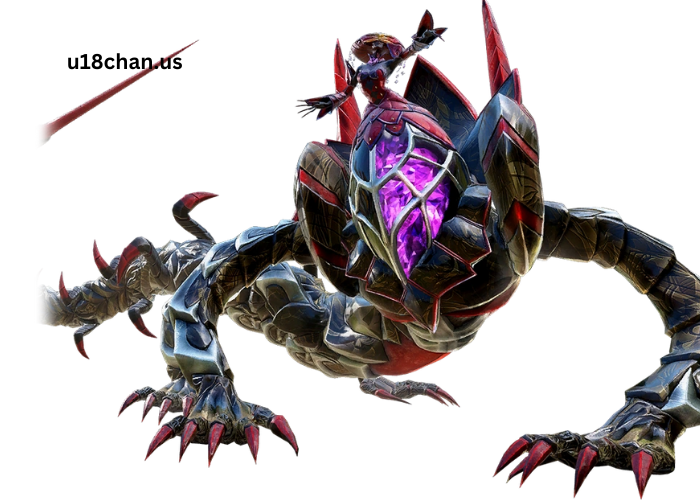In the world of mythology, folklore, and fantasy, there are many creatures with unique characteristics. One such fascinating entity is the Alarune, a humanoid being with a body composed of plant-like elements.
These beings are often depicted as a hybrid of human and plant characteristics, blending organic plant growth with humanoid features. The concept of the Alarune brings together the mystery of nature and the complexity of humanoid evolution, creating an intriguing blend of fantasy and nature.
The Alarune is not just a simple mythical creature but rather a symbol of the deep connection between life, nature, and the environment. These creatures often live in forests, jungles, or other lush, verdant areas, serving as guardians of the natural world. With their plant-based bodies, Alarune are depicted as embodying the life force of plants, contributing to both the beauty and mystery of the environments they inhabit.
Key Points:
- Alarune are humanoid creatures with bodies made of plant-like elements.
- They are often portrayed as guardians of nature and the environment.
- Their origins can be traced back to folklore and mythological traditions from around the world.
What Is the Origin of the Alarune?
The Alarune, like many mythological creatures, has various origins depending on the cultural context in which it appears.
While the exact history of the Alarune is difficult to pinpoint, it is most commonly associated with ancient European and Asian folklore. In particular, many tales of plant-based humanoids can be traced to various mythological traditions, such as those found in European forests, or even the spirit-based beings of East Asia.
The word “Alarune” itself is often attributed to folklore where beings with plant-based characteristics are revered as natural guardians. In some cultures, they were believed to be spirits or entities that protected sacred groves, gardens, and forests. Their role was essential to the health of these ecosystems, with the Alarune seen as a keeper of balance between nature and human encroachment.
In Western mythology, creatures like the dryads, nymphs, and tree spirits often share similarities with the Alarune. These beings were typically envisioned as part human and part plant, embodying the spirit of nature in physical form.
The Alarune takes inspiration from these ancient traditions but evolves the concept into something uniquely humanoid, blending both plant and human traits in a more integrated and tangible way.
How Do Alarune’s Plant-Based Bodies Function?
One of the most intriguing aspects of the Alarune is its plant-based body. These beings are often depicted as having humanoid forms, but their physical structure is deeply rooted in plant biology.
Their bodies are made from plant tissue, with limbs and organs resembling those of plants, including flowers, vines, leaves, and even roots. But how exactly do these plant-based bodies function, and what makes them different from regular human bodies?
Alarune are typically shown as having the ability to photosynthesize, much like plants. This means they can convert sunlight into energy, which provides them with sustenance. Some depictions even show Alarune as being able to absorb nutrients from the soil, much like how a plant’s roots absorb water and minerals. This connection to the environment allows them to thrive in forested or jungle-like settings where they can remain closely linked to the earth.
Moreover, the plant-based nature of their bodies also gives them a distinct advantage when it comes to healing and regeneration. Since plants are capable of growing and regenerating quickly, Alarune are often depicted as possessing regenerative abilities, able to heal wounds by absorbing nutrients from the surrounding nature. Their plant elements may even allow them to grow new limbs or parts of their body in response to damage, making them incredibly resilient.
In terms of anatomy, Alarune often have a humanoid appearance, but their plant features may include:
- Vines for hair or limbs that can move and extend like tendrils.
- Leaves and Flowers adorn their bodies, often changing with the seasons.
- Roots that can anchor them to the ground or interact with the environment in unique ways.
This mix of human and plant traits creates an aesthetic that is both captivating and unsettling, making the Alarune an excellent subject for fantasy and horror fiction.
What Role Do Alarune Play in Mythology and Fantasy?
In various mythological and fantasy contexts, the Alarune often serves as a protector of the natural world. They are typically shown as guardians of forests, jungles, or other places where the balance of nature is at risk.
Alarune are seen as ancient spirits of nature deities, tasked with maintaining the harmony of their environments. Their role is to guard sacred places, prevent human exploitation of nature, and restore balance when nature is threatened.
In some folklore, the Alarune are also known for their seductive qualities, using their plant-based bodies to lure travelers or adventurers into dangerous situations. Their connection to nature and the earth makes them both alluring and perilous.
For example, an Alarune might use the scent of flowers or the mesmerizing motion of their plant-like limbs to captivate those who wander too close to their territory, leading them into traps or even absorbing their life force.
In fantasy literature and video games, Alarune often takes on roles as both antagonists and protagonists. They may appear as wise figures who offer guidance to heroes or as dangerous creatures whose presence signifies an imminent threat to the natural world. Whether benevolent or malevolent, the Alarune represents the untamable forces of nature and the complex relationship humans have with the earth.
How Do Alarune Interact with Humans and Other Creatures?
One of the most fascinating aspects of Alarune is their interaction with humans and other creatures. Due to their plant-based bodies and deep connection to nature, Alarune often exhibit behaviors that set them apart from traditional humanoid beings.
1. Symbiotic Relationships with Nature:
Alarune are often shown to have a symbiotic relationship with the natural world, wherein their existence benefits the environment they inhabit. They may protect trees, flowers, and other plant life, ensuring the ecosystem remains in balance. In return, Alarune draw sustenance and energy from these plants, forming a delicate balance between themselves and the environment.
2. Human Encounters:
When humans encounter the Alarune, the results can vary. In some stories, they are seen as protectors of nature who wish to help humans live in harmony with the earth. In other tales, they may be hostile towards human encroachment, especially if the balance of nature is disrupted. Their relationship with humanity is often complex, ranging from friendly alliances to dangerous confrontations.
3. Relations with Other Mythical Creatures:
Alarune often interact with other mythical creatures, especially those tied to nature. They might form alliances with beings like dryads, elves, or nymphs, sharing a common goal of protecting the environment. However, their relationships with creatures like trolls, goblins, or destructive forces of nature might be more adversarial, as these creatures often pose a threat to the natural order that the Alarune seek to preserve.
Conclusion
The Alarune, with its unique combination of plant and humanoid characteristics, stands as a testament to the creativity and mystery of mythology and fantasy.
These creatures, with their deep connection to nature, offer a fascinating lens through which we can explore themes of life, growth, and the environment. Whether depicted as protectors or seducers, the Alarune remain a compelling figure in both ancient lore and modern fantasy stories.
From their plant-based anatomy to their role as guardians of nature, the Alarune represent an intriguing fusion of human and plant qualities. As we continue to explore the mysteries of the natural world, the figure of the Alarune reminds us of the delicate balance between humanity and the environment and the importance of respecting the forces of nature that sustain life.
FAQ’s
- What is Alarune?
The Alarune is a humanoid creature with a body composed of plant-like elements, blending human features with botanical characteristics.
- Where do Alarune originate from?
Alarune are often found in folklore and mythology, with roots in European and Asian traditions that feature nature spirits or plant-based humanoids.
- How do Alarune interact with nature?
Alarune are deeply connected to the natural world, often serving as guardians of forests and plant life, ensuring the balance of ecosystems.
- Are Alarune harmful to humans?
Alarune can be both protective and dangerous. In some stories, they protect humans; in others, they may pose a threat if their territory or the balance of nature is disturbed.
- What roles do Alarune play in mythology and fantasy?
Alarune are often depicted as nature guardians, protectors of sacred places, or even seductive figures who draw humans into their grasp. They represent the dual nature of the earth—nurturing yet dangerous.




